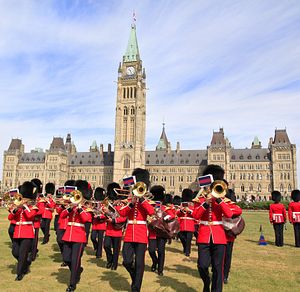Late last month, Canadian Minister of International Trade Ed Fast led a four-day trade and development mission to Laos and Burma. With that mission, Fast has now taken his country’s pro-trade message to all 10 ASEAN countries, as Canada seeks to ramp up its economic, trade and diplomatic ties with Southeast Asian states.
Although Canada has been one of the longest-serving ASEAN dialogue partners, ASEAN-Canada ties have taken off over the past few years. Ottawa appointed an ambassador to ASEAN in 2009, acceded to the Treaty of Amity and Cooperation in 2010, and supported the creation of the Canada-ASEAN Business Council in 2012. Aside from Fast, other high-level officials, including Foreign Minister John Baird, Development Minister Christian Paradis, and even Prime Minister Stephen Harper, have been making the rounds in Southeast Asia. Last month, Baird announced plans to establish diplomatic missions in Cambodia and Laos as well as one to ASEAN located within the Canadian embassy in Jakarta, which would finally mean a Canadian presence in all 10 Southeast Asian countries as well as within ASEAN as an organization.
The most obvious driver of Canada’s pivot to ASEAN over the past few years is economics. Canada-ASEAN trade has grown by 30 percent over the last few years, reaching around $17 billion in 2013. ASEAN, now Canada’s seventh largest trading partner, is also part of the Canadian government’s Global Markets Action Plan which seeks to create jobs at home by boosting trade with important emerging markets abroad.
But the agenda for Canada-ASEAN relations includes much more than that. As Baird himself noted in a recent lecture in Singapore (also the current country coordinator for ASEAN-Canada dialogue relations), Canada can also make a meaningful contribution to regional stability, particularly in areas such as democratic governance, energy and security. For example, at the ASEAN-Canada Post-Ministerial Conference on the sidelines of the ASEAN Foreign Ministers Meeting in August, Baird announced that Canada would provide $14 million in funding towards regional security and connectivity, covering projects including mitigating biological and nuclear threats, advancing cyber-security, and countering the “foreign fighter” phenomenon and radicalization in ASEAN countries.
Despite the recent uptick in Canada-ASEAN ties, in truth Ottawa still lags behind other ASEAN dialogue partners like the United States, Australia and New Zealand. While Canada is only beginning to ramp up her diplomatic presence in Southeast Asia, other Western countries are either mulling or inking free trade agreements. Unlike some of its peers, Ottawa is currently locked out of key regional institutions like the East Asia Summit and the ASEAN Defense Ministers Meeting Plus, while connectivity (including direct flights) from Canada to Southeast Asian countries is still quite limited. Media coverage of Canada’s ASEAN pivot is still sparse in Southeast Asian countries, and the Canadian foreign service can only do so much in the region with its tight budget.
Southeast Asian officials, for their part, have praised Ottawa’s enhanced engagement and its support of ASEAN integration. But Canada’s previous record of fleeting attention to the Asia-Pacific means that Ottawa needs to continue to ramp up its commitment to the region if it is to achieve more far-reaching diplomatic triumphs like being admitted to key institutions. Doing so amidst a whole range of foreign policy priorities and with limited resources is never an easy feat. It will require a mix of individual creativity as well as smart and selective partnering with like-minded nations like the United States. But if Canada is serious about the idea of a “Pacific bridge” between Canada and Asia that Baird so vividly described in his Singapore speech, then it will need to build connections that last.

































